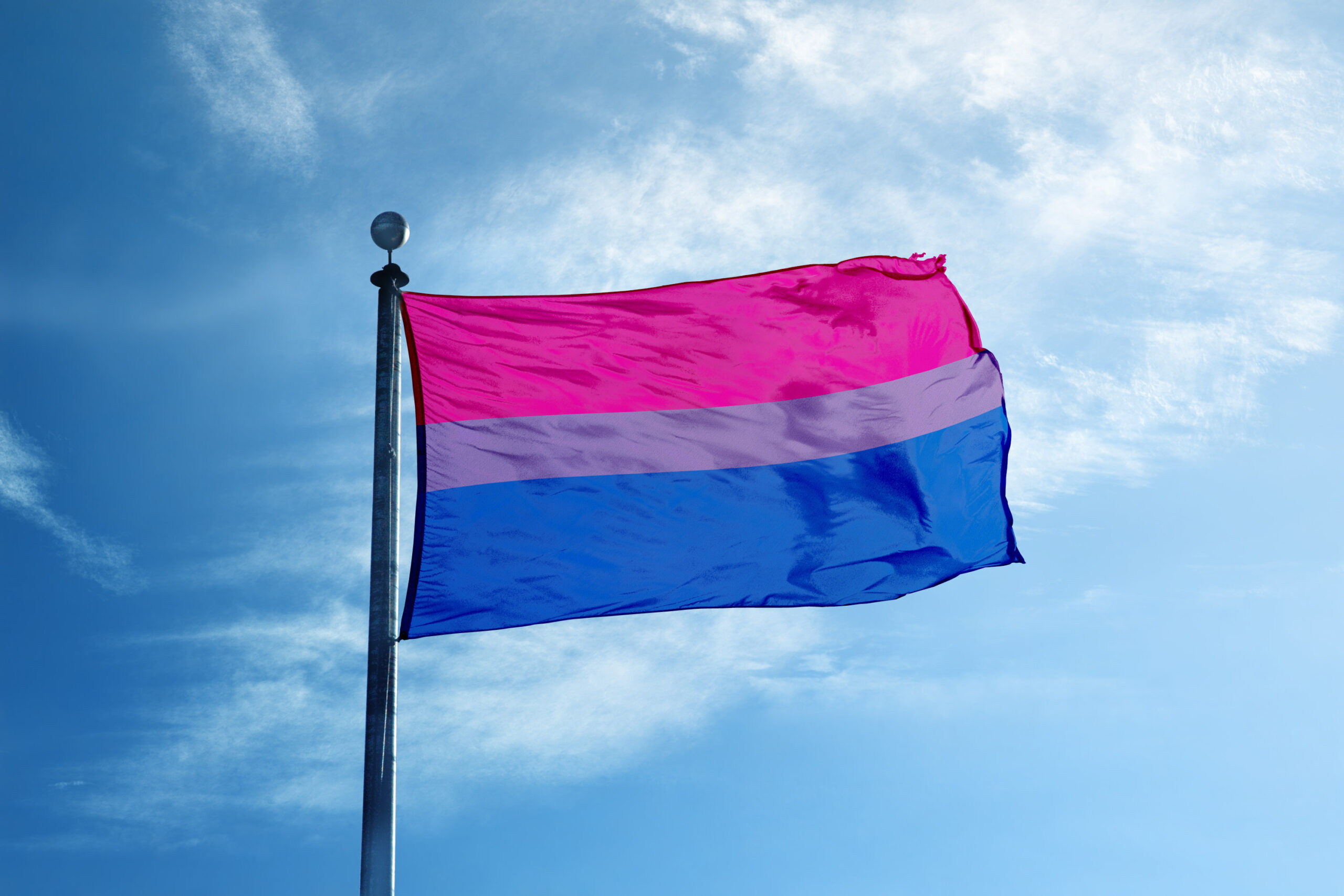Being bisexual is the sexual orientation of individuals who are attracted to both men and women. A bisexual person can experience romantic, emotional, and/or sexual attraction to people of more than one gender. It’s important to note that bisexuality doesn’t necessarily mean an equal attraction to all genders, nor does it imply that attraction is limited to only two genders.
In this article, we’ll delve into what it means to be bisexual and the facets of being a part of the LGBTQ+ community.
Where does the word Bisexual come from?
The term “bisexual” is a combination of two prefixes, “bi,” meaning two, and “sexual,” relating to sex. It signifies individuals who are attracted to both men and women. The term gained recognition as a descriptor for this sexual orientation in the 20th century.
The word started becoming mainstream in the UK where groups such as the “London Bisexual Group” were created in the early 80s. Initially during this time, the word meant attraction to “both” genders.
Although “bisexual” is the widely recognised term for this orientation, individuals may use other labels like pansexual or fluid to express their attraction to people of multiple genders.
Other ways to say “Bisexual”
Language is personal, and individuals may prefer different terms to express their identity. Some alternative ways to refer to being bisexual include:
- Bi
- Ambisexual
- Queer
- Swinging both ways
- AC-DC
Labels and terms carry nuanced connotations, and personal comfort may dictate the choice of one term over another, even if they essentially mean the same thing.
What makes someone Bisexual?
Being bisexual refers to an individual who is attracted to both men and women. However, one’s identity can go beyond this label. Some bisexual individuals may also identify with other aspects of their sexuality, such as being romantically attracted to one gender while being sexually attracted to multiple genders.
One of the biggest misconceptions about the bisexual community is that bisexual people are split 50/50 in terms of their attraction to two different genders. This is of course a myth, as one might be much more attracted to someone of the same gender as them and slightly attracted to another gender or vice versa. This shows that bisexuality has a large range and is not to be confined by the binary people have often tried to box sexuality into.
Another falsehood is the belief that dating someone of a different gender makes you “straight.” This regressive notion created the movement #StillBisexual in efforts to fight the notion that your relationship dictates your sexuality.
Addressing Biphobia
Unfortunately, being part of the LGBTQ+ community doesn’t always shield individuals from the challenges of discrimination and prejudice. Biphobia is a form of discrimination specifically targeting bisexual individuals, often stemming from misconceptions or stereotypes about bisexuality.
Biphobia can manifest in various ways, from erasure, dismissing the legitimacy of bisexuality as a valid sexual orientation, to harmful stereotypes, such as the misconception that bisexuality reinforces promiscuity or indecision.
It is really important to reflect on whether or not you might be unintentionally being biphobic. Comments that insinuate that their sexuality is “invalid” or not as important as being gay or lesbian can be really harmful to that person’s feelings towards their sexuality. If you are facing biphobia remember that your identity is legitimate without a doubt and the challenges you face should not be invalidated.
Is this identity for you?
The LGBTQ+ community is expansive, offering numerous ways to express one’s identity. It might be challenging at first to understand where you fall on the spectrum. If you’re uncertain about whether you identify as bisexual, consider reflecting on the following questions:
Have I had attractions or crushes on people of different genders throughout my life?
Reflect on your past experiences. Have there been instances where you felt a romantic or sexual attraction to individuals of more than one gender? Sometimes we think we are just “admiring” someone because they identify as the same gender as ourselves. It is helpful to think about whether your feelings are that of admiration or that of romance and sexual attraction instead.
Can you picture yourself dating, having sex, or being in love with people of multiple genders?
Reflect on how you perceive individuals of different genders. Do you see them only as friends, or are there feelings of romance and attraction present? If you can envision yourself in relationships with people of multiple genders or engaging in sexual activities with them, you might identify as bisexual. If you feel the same way about individuals of a single gender, that’s okay too! Homosexuality, heterosexuality, and other sexual orientations focus on attractions to specific genders.
How do I feel about individuals of different genders?
Reflect on your feelings toward men, women, and individuals of other genders. Are there patterns of attraction or connections that you’ve noticed? Remember that bisexuality doesn’t mean 50/50, if you feel like you are only attracted to men 20% of the time you can still adopt the bisexuality label. There is no exact equation when it comes to identifying as bisexual.
Bisexual Representation in Media
What better way to understand and explore your sexuality than seeing it represented in the media? Not only is this a beneficial way to feel accepted, but it is also a great way to get to know the nuances and different intersections when it comes to bisexuality.
Here are a couple options to help you get started::
- The Bisexual: This comedy-drama series explores the experiences of a woman navigating her newfound bisexuality in London.
- The Half of It: A coming-of-age film that delves into the complexities of love and friendship, featuring a bisexual protagonist.
- They Both Die at the End by Adam Silvera: In a world where people receive a call on the day they will die, two boys, Mateo and Rufus, meet and spend their last day together. Mateo is bisexual, and his identity is explored throughout the story.
- Sense8: This science fiction series includes a diverse cast of characters, one of whom is a bisexual woman.
Our culture page is a great resource for more content related to LGBTQ+ identities, including bisexual experiences.
The Bisexual Flag
View this post on Instagram
The bisexual flag was designed by Michael Page in 1998 to represent the bisexual community. The colors on the flag represent the following:
- Pink: represents same-gender attraction
- Blue: represents opposite-gender attraction
- Purple: represents the combination of both.
Bottom Line
The bottom line is that bisexual representation matters, and understanding the nuances of the community is essential for allies and community members alike.
At first it might be confusing to understand who you are and what sexuality best represents you. The good news is that there is no wrong answer and sexuality is fluid and can change over time!
If you connect with the ideas above and are contemplating coming out, ensure that the conditions are safe. Have a plan of action regarding housing and food in case things don’t go as planned.
In addition, be sure to learn about the other LGBTQ+ identities, subscribe to the INTO newsletter to learn more.
Don't forget to share:
Help make sure LGBTQ+ stories are being told...
We can't rely on mainstream media to tell our stories. That's why we don't lock our articles behind a paywall. Will you support our mission with a contribution today?
Cancel anytime · Proudly LGBTQ+ owned and operated
Read More in Culture
The Latest on INTO
Subscribe to get a twice-weekly dose of queer news, updates, and insights from the INTO team.
in Your Inbox













